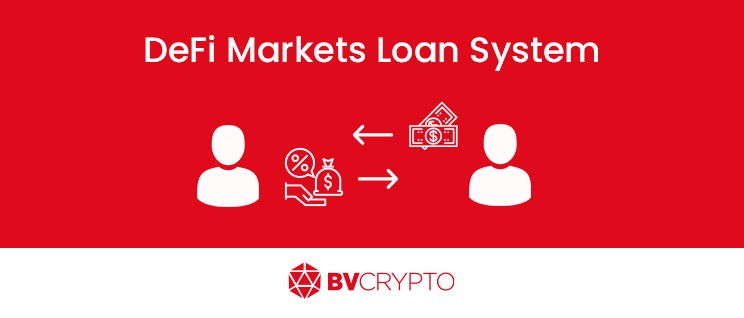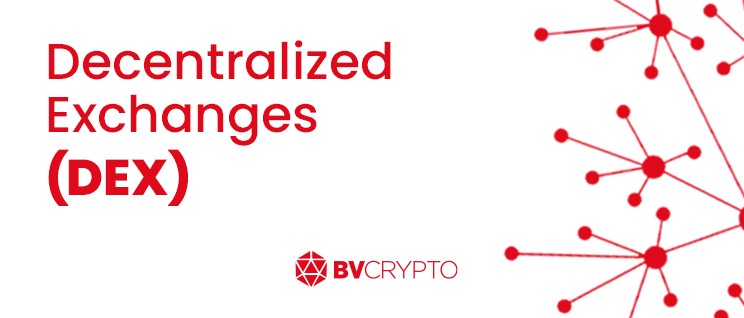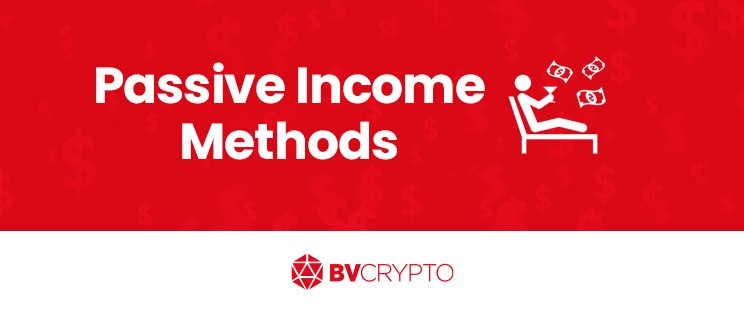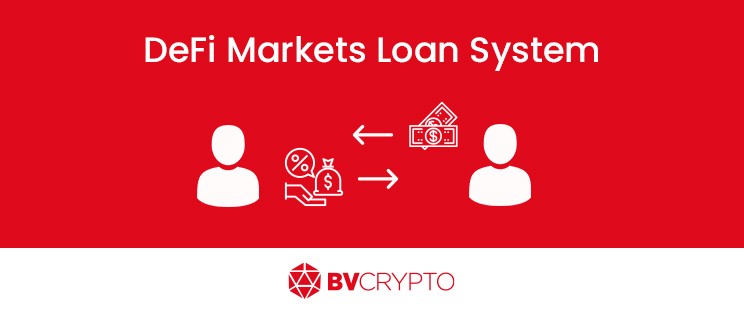
DEFI 101
‘DeFi’, which is the English abbreviation of the recently often-heard words ‘’Decentralized Finance’’ continues to maintain its place on the agenda. Being called a new financial revolution or a new trend that will ignite the cryptocurrency sector, DeFi offers many innovations in the financial field. Among the innovations it offers, the most striking features are the decentralized exchange, loan system and passive income methods.
In this article, we will first touch upon the loan system, then discuss the decentralized exchange (DEX) and passive income methods, as well as the activities of the main DeFi platforms.

DeFi Markets Loan System
The loan system in DeFi markets is based on collateral. By pledging the cryptocurrencies deposited on the DeFi platform as collateral, a cash loan of 67% of such collateral can be obtained and used as desired. When the loan is repaid, the platform transfers the cryptocurrencies pledged as collateral back to the account.
As can be seen, the fact that the loan is based on collateral reveals a clear difference compared to the open loan system received from banks. Let’s take a look at why DeFi loans are based on collateral and the issue of collateral security margin:
In our daily life, we can get unsecured loans from banks. Banks examine the user’s personal information and financial history instead of collateral. With the assurance provided by banking laws, no trust issues arise when getting a loan.
On the other hand, the DeFi market neither has banking-like laws nor needs users’ personal information and financial backgrounds. Nevertheless, the trust issue in the loan process must somehow be resolved. As a result, DeFi platforms demand cryptocurrency collateral in return for their loan. In this way, the platform takes responsibility to the user and the user to the platform. If the user cannot repay the loan, their cryptocurrency gets confiscated. If they repay their loan debt, the cryptocurrencies they will get back may have gained value during this period. Therefore, the short-term cash needs of the user are met and the cryptocurrency investment is protected.
Due to the high volatility of cryptocurrency prices, there is often a serious change in value. DeFi platforms also give a 67% loan in case the cryptocurrencies they receive as collateral lose value. In other words, $67 loan can be taken for a guarantee worth $100. The remaining 33% becomes the guarantee of the platform. This is an average rate. It may differ from platform to platform. As 33% and above will create a more secure loan system, a ratio below 33%, on the other hand, will increase the risk of the platform.

Decentralized Exchanges (DEX)
Before decentralized exchanges, one must briefly mention central cryptocurrency exchanges. The fiat or cryptocurrencies deposited in the cryptocurrency exchanges are stored in the exchange’s own wallets. Therefore, although users only view their own balance on the exchange’s system, cryptocurrencies are completely entrusted to the exchange. In other words, in the case ofexchange is hacked, cryptocurrencies entrusted face the risk of being stolen.
No matter how high the security systems of the exchanges are, there is still a risk of hacking. Decentralized exchange offers a safer system against hacking. For this reason, the volume of such exchanges has increased significantly in the last few months and many of the users have transferred their cryptocurrencies from central exchanges to decentralized exchanges.
Let’s take a look at how these exchanges work, their advantages and disadvantages:
Decentralized exchanges do not require users to transfer their cryptocurrencies to their exchanges. Instead, users integrate their own blockchain wallet into the system. In this way, they can perform direct purchase and sale transactions with the balance in their wallet and the money pool in the exchange. In other words, the tradable cryptocurrency takes place directly from the wallet to the wallet without the need for an intermediary. The exchange only takes commission fees from the transaction. This process is performed with smart contracts. At the same time, this system is more suitable for the working principle of cryptocurrencies. As one of the purposes of the emergence of cryptocurrencies is to eliminate intermediaries in money transfers.
However, as in every system, decentralized exchanges also have some disadvantages besides the advantages of high security and brokerage:
- Decentralized exchanges are now well behind centralized exchanges in terms of depth. In other words, they have low liquidity. For this reason, high value transactions may not be available in all pairs.
- Decentralized exchanges do not need users’ personal information as much as centralized exchanges. For some systems, only the integration of the blockchain wallet into the system is sufficient. In this sense, it can be said that decentralized exchanges attach more importance to the privacy of the person, but this can be seen as a disadvantage due to them being out of regulation. Central exchanges, on the other hand, are obliged to request personal information and carry out many procedures since they are subject to the regulations of the countries they operate in.
- Central exchanges are in a more advantageous position in terms of speed. Your purchases and sales on the exchange are not transferred from one wallet to another. Only the transfer from one balance to another on the system takes place. Cryptocurrencies remain in the exchange’s wallet. Therefore, trading transactions take place within 1–2 seconds. In decentralized exchanges, as transactions take place from wallet to wallet, it takes longer time depending on the type of cryptocurrency.
As a result, decentralized exchanges take the current system to the next level in terms of security. They also serve the purpose of eliminating cryptocurrency intermediaries and ensuring personal privacy financially. In addition, decentralized exchanges fall behind central exchanges in terms of speed and liquidity as a new system. In the coming months, decentralized exchanges can be expected to make progress in liquidity, with more and more users gaining and the use of active blockchain wallets. However, it is likely that central exchanges will continue to lead the race in terms of speed.

Passive Income Methods
The most common passive income method is the “staking” system. With DeFi, two new passive income methods have been added in addition to staking cryptocurrencies. In all three methods, users earn interest income from the system in return for locking (holding) their cryptocurrencies for a certain period of time.
Before starting the methods that come with Defi, it will be useful to briefly explain the staking system. Some cryptocurrencies use the POS algorithm for blockchain networks. This algorithm allows users to stake their cryptocurrency. The staking process starts in return for the user to keep their cryptocurrencies in the wallet for a certain period of time and not spend them. The user earns interest income in this way.
Passive income methods offered by the DeFi market are fully integrated with the loan and exchange systems we mentioned above. These platforms give loans to their users in return for collateral. The loan provided can either be directly USD or stable coin or another type of cryptocurrency. The lending platform offers interest income to users who have cryptocurrency in order to continuously meet the demand. In return for this interest income, the user locks their cryptocurrency on the platform. In other words the user sort of lends money to the platform. The platform uses this cryptocurrency to provide loan. This system is actually very similar to the loan system of banks.
To make this process more dynamic, some platforms give a representative cryptocurrency in exchange for the locked coin. For example, if 100 ETH is locked (lent) the platform will give 100 bETH representing this money. At the end of the lockout process, the user’s 100bETH is transferred back to the account as 100 ETH + interest income.
This application is very useful for both those who want to earn interest income and want to actively use their cryptocurrencies. Because the representative bETH money can be exchanged on the platform’s (if any) stock exchange and other exchanges that accept this money. Likewise, it can be sent to another person. For instance, let’s say 40 out of 100 bETH received for 100 ETH are transferred to someone else. After this transfer, the user receives 60 ETH + interest income at the end of the lockout process. The other person with 40 bETH also receives 40 ETH + interest income. In this way, interest income can also be transferred.
Another method is to provide liqudity to decentralized exchanges. Centralized exchanges make agreements with individuals or companies called “market maker” so that the parities offered by decentralized exchanges on their platforms can reach sufficient liquidity. In this way, the required depth is provided in parities. Users are affected minimally by the difference between buy and sell orders and can trade with high depth.
Decentralized exchanges use a system where anyone can be a market maker. In other words, every user can provide resources for parities with insufficient liquidity in decentralized exchanges thanks to the system. For instance, let’s suppose the user wants to provide liquidity to the ETH / USDC parity of the decentralized exchange. The user can provide liquidity this parity by locking the ETH and USDC cryptocurrencies in equal value on the platform. The exchange shares some of the commission received from the transactions made in the pair with the user. Therefore, as the amount of transactions made in the parity increases, the income of the user who supplies this parity also increases. It can be said that this system, in which everyone can be a market maker, offers a more democratic and dynamic usage area and serves the purpose of establishing cryptocurrencies.
At this point, we should also mention a possible loss called “impermanent loss”. Although it is a method used to lend cryptocurrency to decentralized exchanges and generate commission income, this process may not always be profitable.
The liquidity to be provided for the parity should be transferred as 50% — 50%. Maintaining this level enables the user to lose profit if the cryptocurrency gains value, and their loss to decrease if the cryptocurrency decreases.
Let’s explain the matter with an example:
Suppose the user wants to provide liquidity to the ETH / USDC parity.
- Let’s take 1 ETH = 500 USDC on the transaction date. USDC (stable coin) = 1 USD
Suppose the user transfers 20 ETH and 10,000 USDC = $ 20,000 to the exchange due to the 50% rule. - Let’s assume that the price of ETH reaches $550 in an exchange in thefollowing days.
– In this case, arbitrageurs will buy ETH from the decentralized exchange and sell their USDC to the decentralized exchange due to the appreciation of ETH.
Therefore, the currency pool of the decentralized exchange will now have more USDC and less ETH. - In case the user wants to withdraw their money at that moment, the USDC and ETH amounts to be taken from the pool will be determined again according to the balance in the pool.
- Since 1 ETH is $550, the user will receive 19.07 ETH + 10,488.09 USDC = $20,976.59
from the exchange. This level is the amount that occurs at the point where the price is fixed in the two exchanges after trading made due to the arbitrage advantage between exchanges. - At this point, the user can be considered to make a profit of $976.59. However, if the money was not invested in the decentralized exchange but held, the user would earn $1,000 profit by owning $21,000 with 20 ETH + 10,000 USDC. $1000 — $976.59 = $23.41 is the user’s loss. This loss is called “impermanent loss”. Therefore, if the user plans to provide liquidity to pool of decentralized exchange in a long term in order to cover this loss with the commission income, it may produce healthier results.

Major Platforms
Following the basic operating principles of DeFi markets, let’s take a look at the top 3 DeFi platforms according to DeFi Pulse data, which includes analyzes and rankings of these markets:
1. Makerdao
Makerdao is a decentralized DeFi platform that users use to get loan. The platform is in a leading position in terms of its capital. Makerdao, running on the Ethereum blockchain network, operates on the two cryptocurrencies it owns. These are DAI and MKR cryptocurrencies.
DAI is a dollar-indexed stable coin. In other words, an equality of 1 DAI = 1 USD exists. Users who want to borrow from the Makerdao platform receive DAI in exchange for their cryptocurrency collateral. The DAI amount they will receive will be 67% of the USD value of the deposited cryptocurrency. For instance, 67 DAI can be taken as a loan in exchange for 100 USD ETH deposit. Makerdao currently accepts 18 cryptocurrencies as collateral. List of accepted cryptocurrencies can be viewed at https://daistats.com/#/.
DAIs received against collateral can be transferred to another user or used for trading on platforms such as Uniswap, Curve, Binance, Coinbase.
MKR cryptocurrency is used for the management of the Makerdao platform. MKR holders are entitled to vote for changes to the platform. These changes may include technical issues related to which cryptocurrencies are accepted as collateral, commission rates or smart contracts. In short, any change on the system is made by the votes of MKR users. In this way, the platform will not depend on a specific person or organization. Makerdao is thus decentralized.
2. Aave
Aave is a DeFi platform running on the Ethereum blockchain network. It gives loans to users like Makerdao in exchange for cryptocurrency collateral. In the same way, interest income can be obtained in exchange for cryptocurrencies to be locked on the platform. Although similar to Makerdao in this sense, Aave has three significant differing features. These are Flash Loan, aToken and AAVE cryptocurrency.
- Flash Loan stands for quick loan. This loan is valid for the confirmation time of a block on the Ethereum network which is approximately 15 seconds. The loan that has not been refunded within 15 seconds becomes liquid and the user’s collateral is seized. As can be understood from the limited time, this type of loan does not appeal to the general user. The flash loan, which is rather used by people who have high level of technical knowledge about cryptocurrency literacy and platforms and also have coding knowledge, is not a popular type of loan as it appeals to a limited audience. However, occasionally profitable loan transactions are made with flash loans. Users usually make use of the loan they receive thanks to the codes they write, with the transactions they perform on other platforms within seconds.
- aToken is actually a general nomenclature. It is used for nominal tokens issued to users who want to earn interest income from the platform. For instance, when it is desired to generate interest income by locking ETH to the platform, Aave delivers the aETH tokens to the user. These tokens are equal to the amount of ETH locked on the platform and represent the locked ETH + interest income. Nominal aETH tokens can be traded by transferring them to other people or platforms, just like ETH. When the user wants to withdraw their collateral, aETH tokens are returned and ETH + interest income is delivered to the user.
- AAVE cryptocurrency is used to vote on changes to the Aave platform. This ensures the decentralization of the platform. The feature that distinguishes AAVE cryptocurrency from others is the passive income system similar to staking.
There is a sort of staking system called safety module to insure the AAVE platform. When users lock their AAVE tokens by transferring them into the safety module, they become a shareholder in the commission income earned by the platform. Therefore, they earn a passive income similar to interest income.
The safety module, on the other hand, was created to cover the damage to the AAVE platform in case of any attack or a major collapse in the market. The AAVE tokens that users lock into the safety module will be sold in such a situation and used to compensate the platform.
The locked AAVE tokens thus both ensure the security of the platform and increase the price of the AAVE token. AAVE holders still retain their voting rights even if they lock their tokens inside the safety module.
3. Uniswap
Uniswap is a decentralized exchange serving on the Ethereum blockchain network. Uniswap, one of the DeFi platforms that has gained the most serious breakthrough in recent times, is the leader in its field and ranks 3rd place in the general DeFi ranking. There are parities of other altcoins running on the Ethereum blockchain network on Uniswap. The liquidation of these parities is provided by the cryptocurrencies deposited by the users, as described in the section on passive income. Users who provide liquidation to the exchange receive their commission income with the UNI token, the exchange’s own cryptocurrency. UNI token holders also have the right to vote for changes on the exchange.
It would be useful to share some data to show the popularity of the exchange in a short time. In less than 2 years, Uniswap has reached a volume of 20 billion USD with more than 250.000 addresses. At the same time, 49.000 addresses locked $1 billion worth of cryptocurrencies to the decentralized exchange to provide liquidation. A commission income of 56 million USD was distributed to users.
When the above platforms are examined, it is seen that the DeFi market is actually built on the values promised by Bitcoin, despite different fields of work. These values are high security due to the decentralization provided by blockchain, intermediary money transfer and financial privacy.
The legal infrastructure of cryptocurrencies is getting stronger, especially thanks to the regulations that have been implemented recently. Due to regulations, cryptocurrency companies are increasingly obliged to record users’ personal information and financial transactions. Considering such process overall, it can be seen that the current cryptocurrency market is gradually changing shape. At this point, DeFi represents a financial innovation that highlights the original values of the cryptocurrency industry. As seen in the examples above, DeFi platforms do not require users’ personal information, offering their users a safe way to provide both decentralized exchange and loan and interest services. In this way, while the identities of the users remain anonymous, a healthy ecosystem comes to life.
It is possible to explain the aggressive demand of the defi sector by the sector’s conservancy regarding original values. On the other hand, the growing popularity of cryptocurrencies is also driving the DeFi market to expand. It should not be forgotten that DeFi is a market that has only started to spread in 2020. Such a new area is expected to mature and diversify in the coming years. Therefore, DeFi stands out as one of the main issues that cryptocurrency investors and anyone interested in the subject should follow closely.